Garden Blog - June 2025
As the popular idiom so wisely observes, ‘time flies when you're having fun’. Having enjoyed the fun of not one, but two, bank holidays in May, we shouldn’t really find ourselves surprised to discover that Midsummer Day is already upon us.
Though Midsummer Day is nowadays associated with the Summer Solstice, the date of which typically falls between 20th and 22nd June, in times of yore, however, it was fixed at 24th June, which was also known as St John’s Day. Midsummer Day was a particularly popular festival in rural communities, marked it with morris dancing, processions, the blessing of crops, the ritual banishment of devils and other unwelcome sprites, heavy drinking, and lewd goings-on. Of course, Puritanical religious types were particularly irked by such shenanigans at times of festivity. One such gentleman, the religious reformer Philip Stubbes, in his The Anatomy of Abuses, of 1583, noted that:
On Mayday, Whitsunday or other times, all the young men and maids, old men and wives, run gadding over night to the woods, groves, hills, and mountains, where they spend all night in pleasant pastimes. And no marvel, for there is a great lord present amongst them, as superintendent over their pastimes and sports, namely Satan, Prince of Hell.
It all sounds like jolly good fun, but, as time went by, such festivals and rituals were gradually abandoned by country folks, with opposition from the church, and bourgeois society concerned with respectability, putting paid to such enjoyments.
Nowadays, on Midsummer Day, most of us are more likely to be out in our gardens, smelling the roses, rather than falling blind drunk into them accompanied by fellow revellers. A particularly fine rose to smell, well known in the times of the aforementioned Philip Stubbes, and cultivated in our Rose Garden, is Rosa Mundi. Known To botanically minded types as Rosa gallica ‘Versicolour’, Rosa Mundi originated as a ‘sport’ of Rosa gallica ‘Officinalis’, which has been in cultivation in Europe since the times of ancient Rome and Greece. Producing a great profusion of distinctive, highly fragrant, semi-double red blooms striped with pink and white, their open flower are very popular with bees as well as gardeners. Their compact, shrubby, suckering habit, makes them perfect for growing as an informal hedge. Rosa Mundi is said to have been named after Rosamund Clifford, known due to her famed beauty as ‘Fair Rosamund’, who was the mistress of Henry II of England.
Rosa Mundi is just one of many dozens of rose varieties that fill the borders and smother the walls of our house and gardens at Deene Park right now, flowering their hearts out with gusto. It’s good to see that all of our hard work pruning roses during the winter months has paid dividends. Complimenting the roses, herbaceous perennials and early summer flowering bulbs are in full flow, too, with masses of geraniums, alliums, salvias, and a host of others, vying for our attention.
We have now finished replacing our seasonal displays of pots, urns, and bedding, from their winter to summer garb. The finale of our endeavours was planting out the Victorian style bedding display at our Stone Summerhouse. As you can see from the picture, it takes quite a few plants.
1 x Japanese Acer centrepiece.
4 x cordyline dot plants.
8 x spider plants to go under the Acer.
120 x cinerarias for edging.
336 x bedding begonias in pink and white.
Before too long, the summer plantings will bulk out, becoming eye catching features, and punctuate our otherwise traditional English country garden with a touch of exoticism.
Sadly, as all gardeners know only too well, there are times when events in our gardens are beyond our control, such as when they face attack from pests and diseases. We’ve recently suffered one such issue ourselves in our Wild Gardens, where several trees became cloaked in ghostly webs of silk, beneath which the foliage had been completely eaten away by countless ravenous caterpillars. On inspecting the arboreal spectres, it was clear that they were all one particular species, that being a British native named bird cherry.
The caterpillars are those of bird cherry ermine moth. They spin their webs and live together in such vast numbers as a successful strategy to protect themselves from predators. The caterpillars then pupate within their webbing, emerging as night flying moths in late summer. After mating, the females will seek out a new host on which to lay their eggs. These hatch and start the cycle anew.
Although a disturbing sight, damage inflicted by bird cherry ermine moth caterpillars isn’t usually problematic in the long term, which is good news. Once the caterpillars pupate and stop feeding, their host will start to grow new leaves. The same trees are not typically infested year on year. After all, it’s of no evolutionary value for the caterpillars to kill their food source.
For now, we’ll have to live with our ghostly trees, and wait for their summer renewal, so until then, happy gardening.
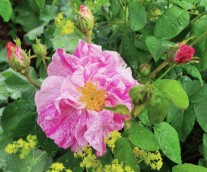 |
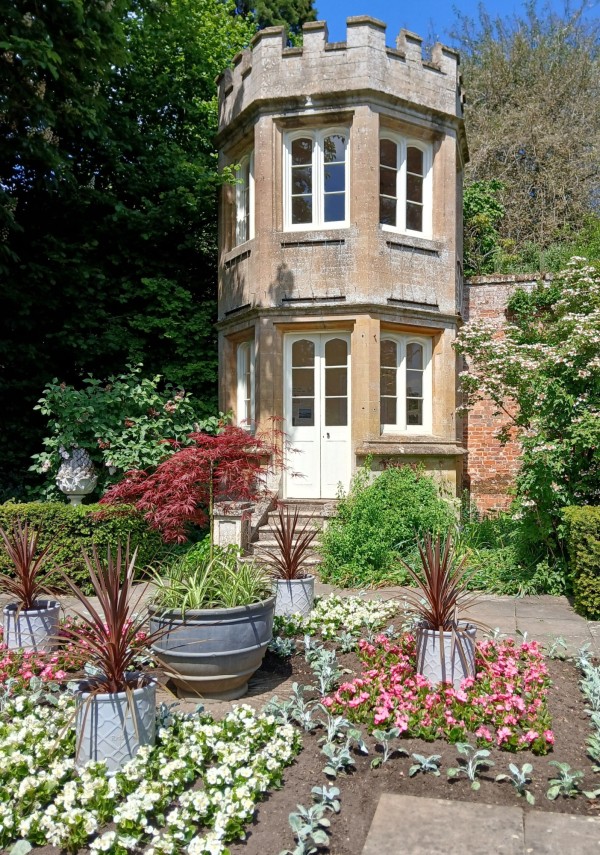 |
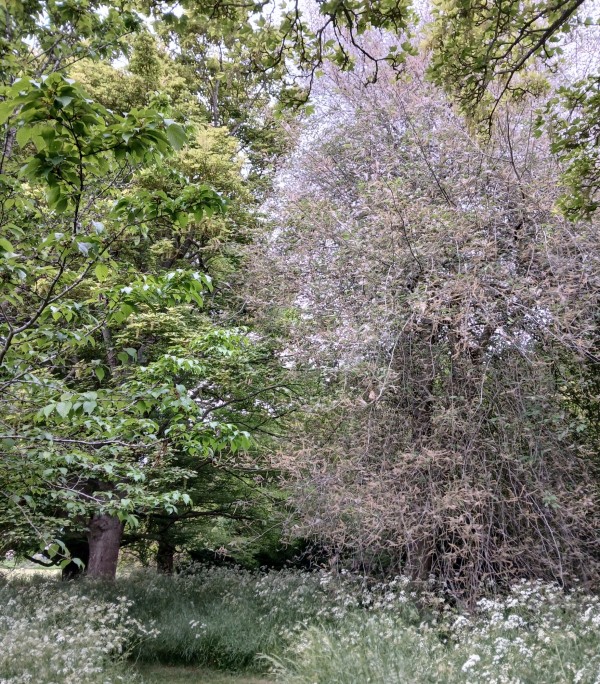 |
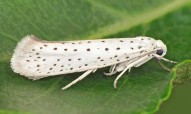 |
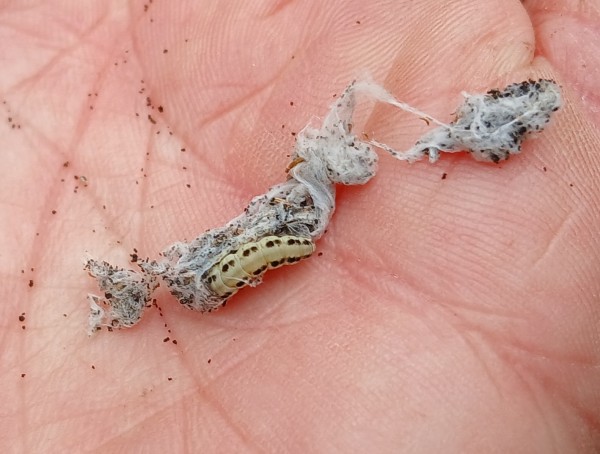 |
| Rosa Mundi | Summerhouse planting | Ghostly bird cherry tree | Bird cherry ermine moth | Ermine moth caterpillar |

